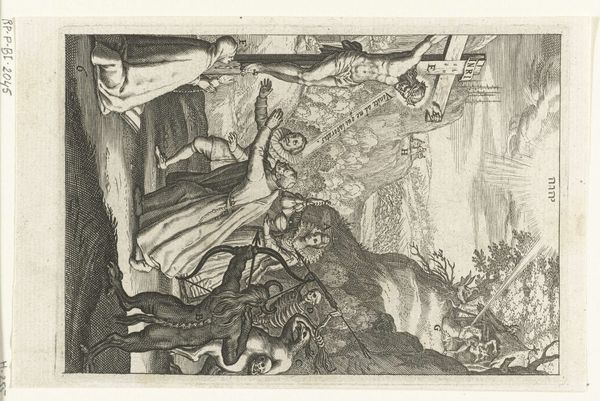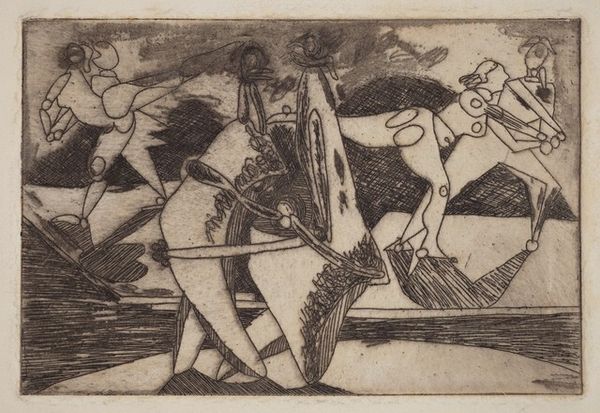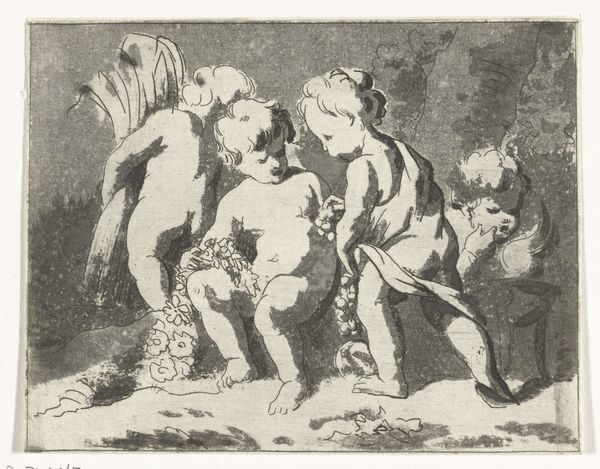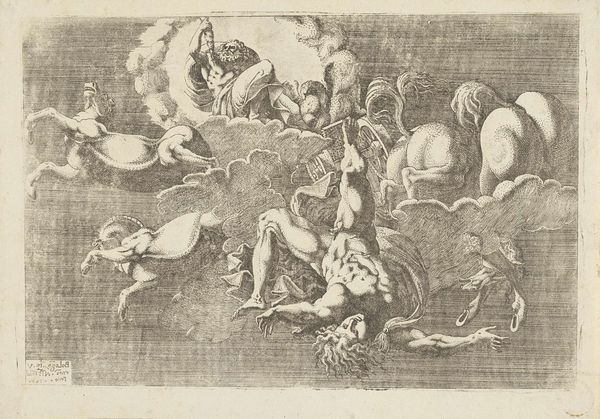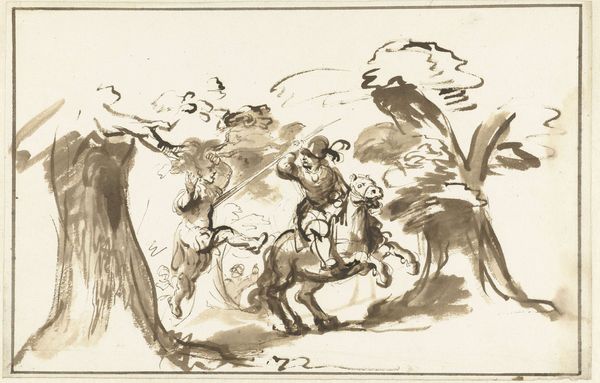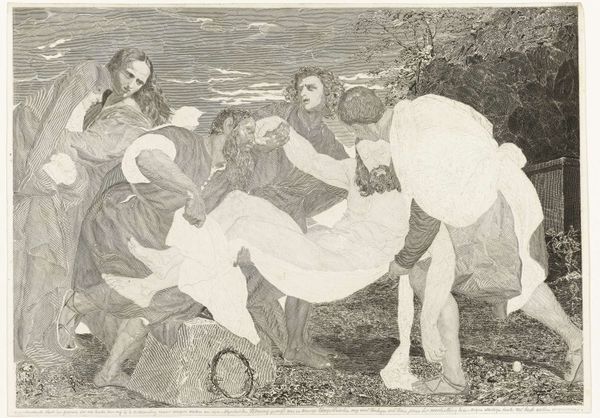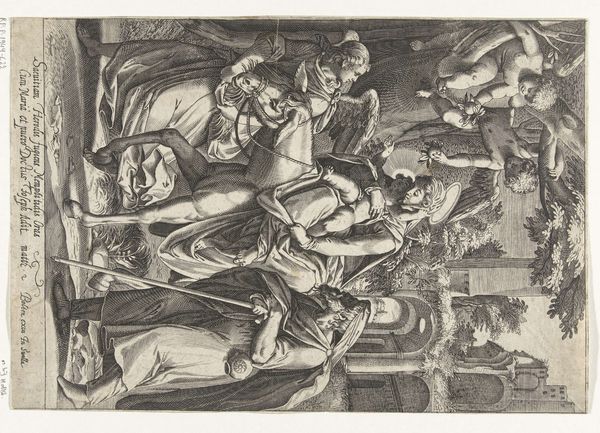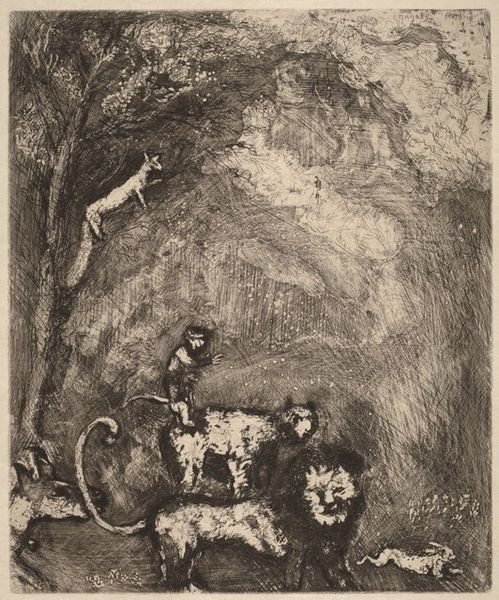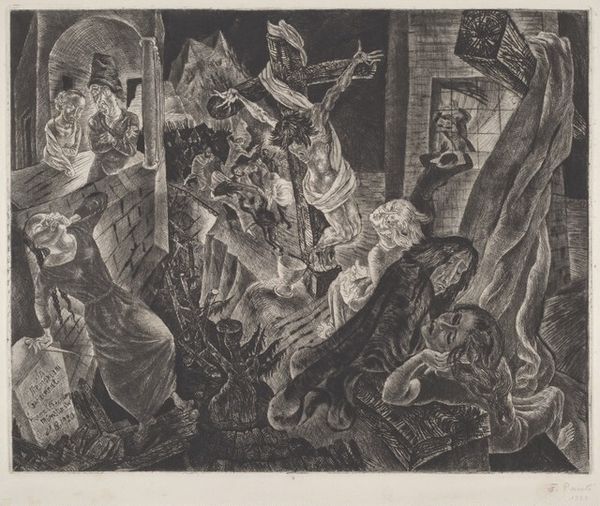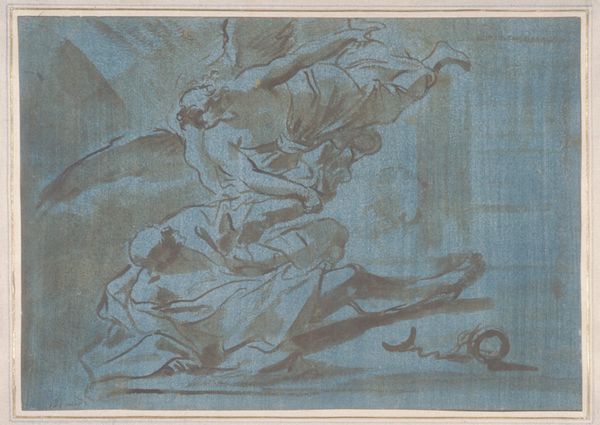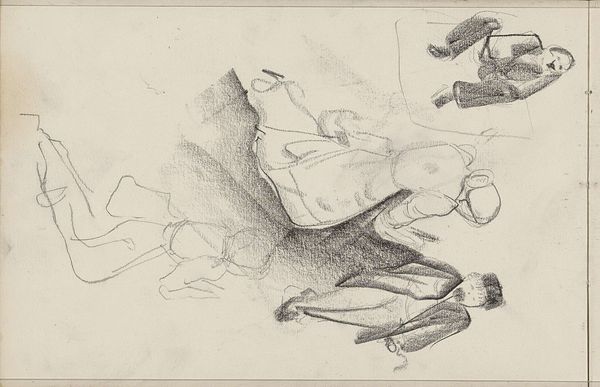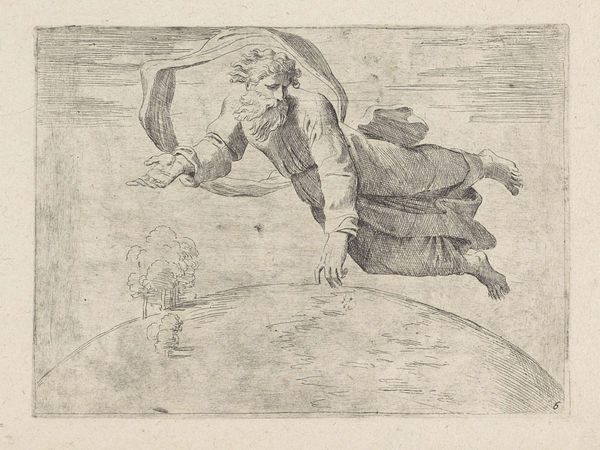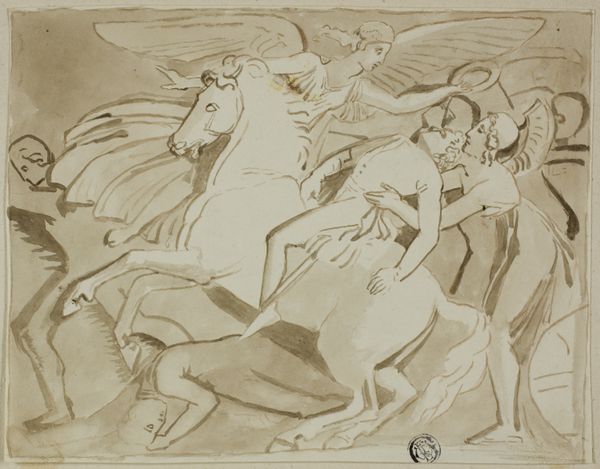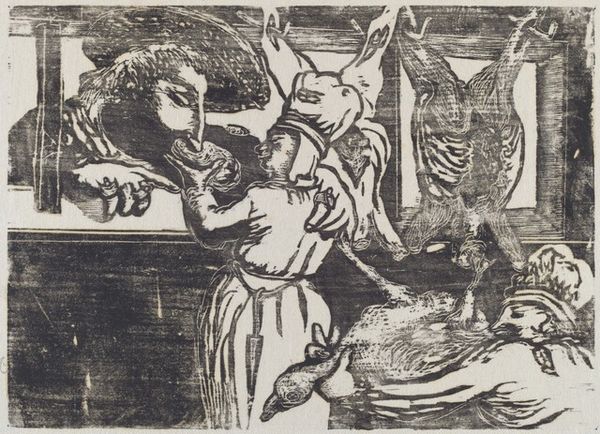
drawing, print, paper, ink, pencil
#
drawing
#
narrative-art
# print
#
figuration
#
paper
#
ink
#
pencil drawing
#
pencil
#
genre-painting
#
modernism
Dimensions: image: 249 x 348 mm sheet: 322 x 461 mm
Copyright: National Gallery of Art: CC0 1.0
Editor: Here we have Andrée Ruellan’s "Circus," a drawing from around 1932, using ink and pencil on paper. The performers seem caught between acts, there’s this sort of dreamlike quality to their poses. What stands out to you in this piece? Curator: Well, beyond the visual elements, what interests me most is its place within the social context of the 1930s. The circus, historically, has been a site of both spectacle and subversion, reflecting and sometimes challenging social norms. Does this drawing celebrate the circus, or perhaps subtly critique the entertainment industry's impact on society during the Depression era? Look at their rather melancholy faces; does that reflect broader anxieties of the time? Editor: I hadn't thought about it that way! So, you're suggesting the artwork isn't just about capturing a scene, but also reflecting the social and economic anxieties of its time? Curator: Precisely. The artist chooses to depict these performers not in the height of their performance but seemingly backstage, hinting at the less glamorous side of entertainment and the broader struggle for survival many faced. And we must consider how galleries chose to showcase works during times of economical challenges, and how these choices informed and impacted artistic perception. Editor: It is such a powerful thing to think that something as seemingly innocent as a circus scene could speak to so many layers of historical understanding! Thank you for expanding my understanding. Curator: It shows us that all art, whether consciously or not, exists within and speaks to a larger social conversation. Recognizing that conversation enriches our interpretation.
Comments
No comments
Be the first to comment and join the conversation on the ultimate creative platform.
